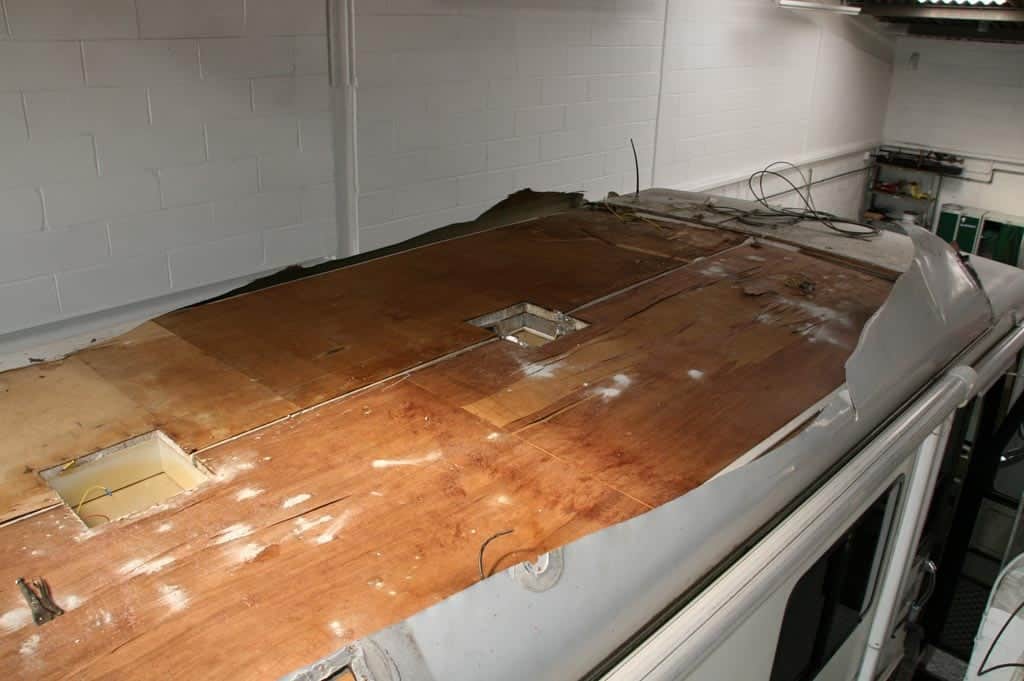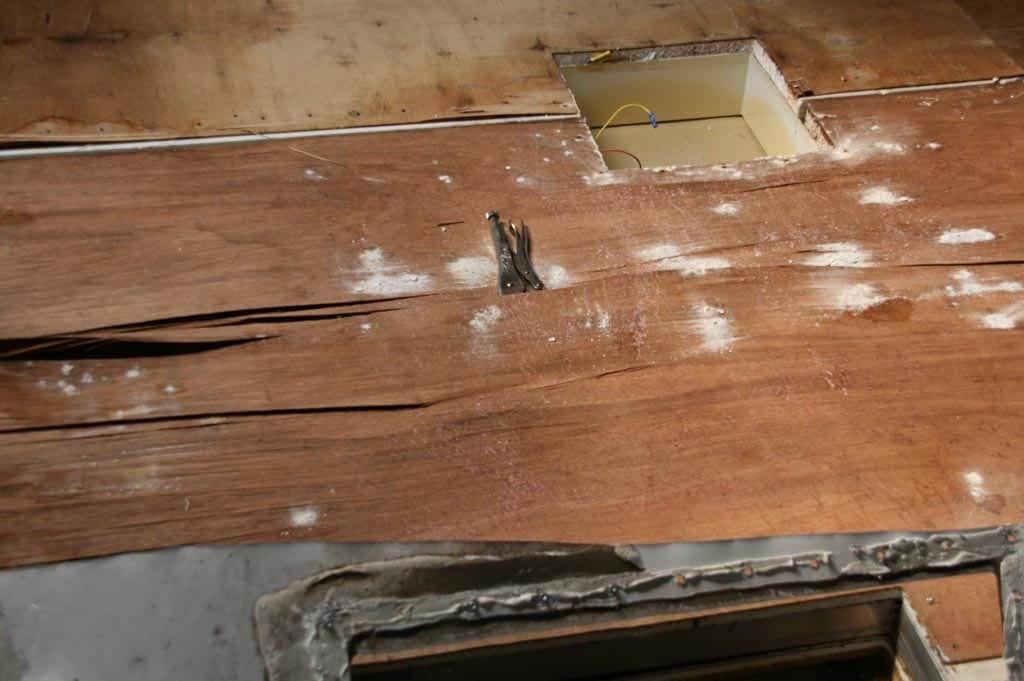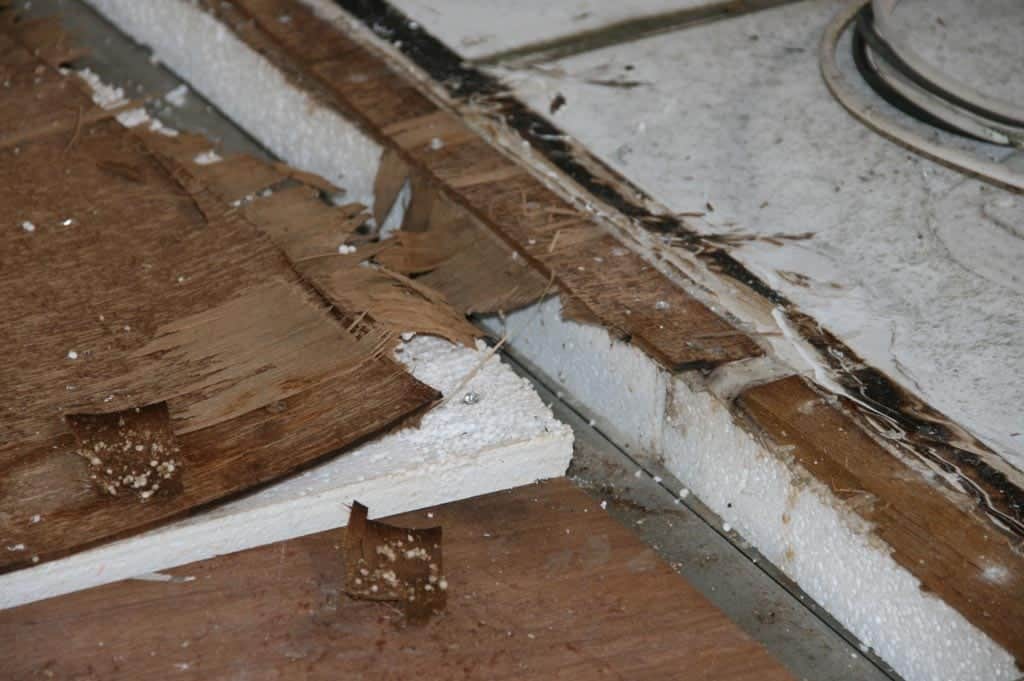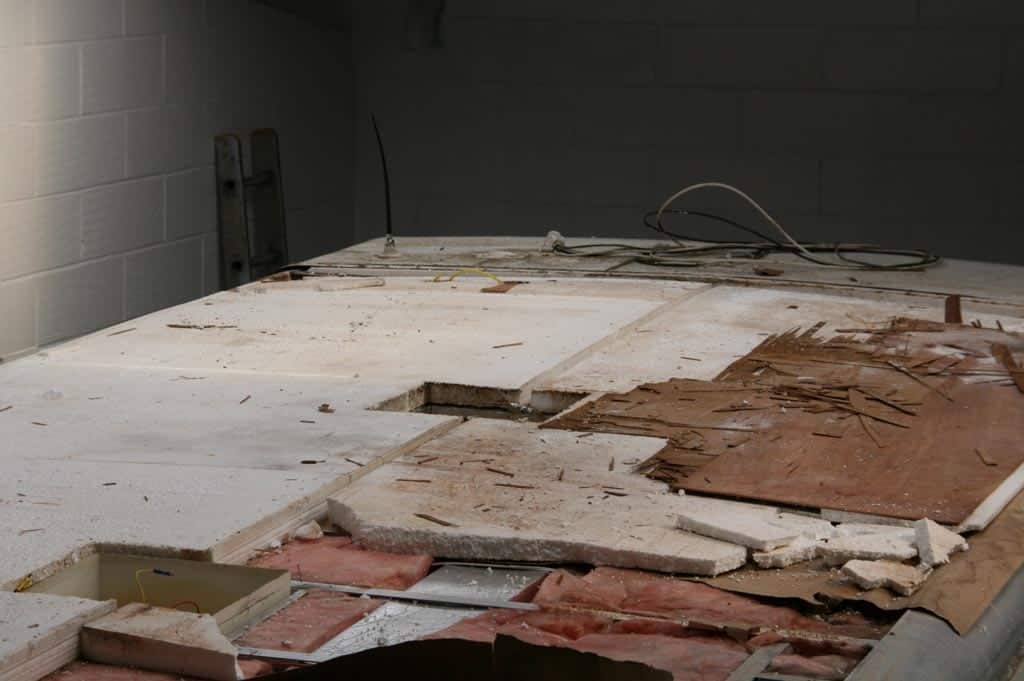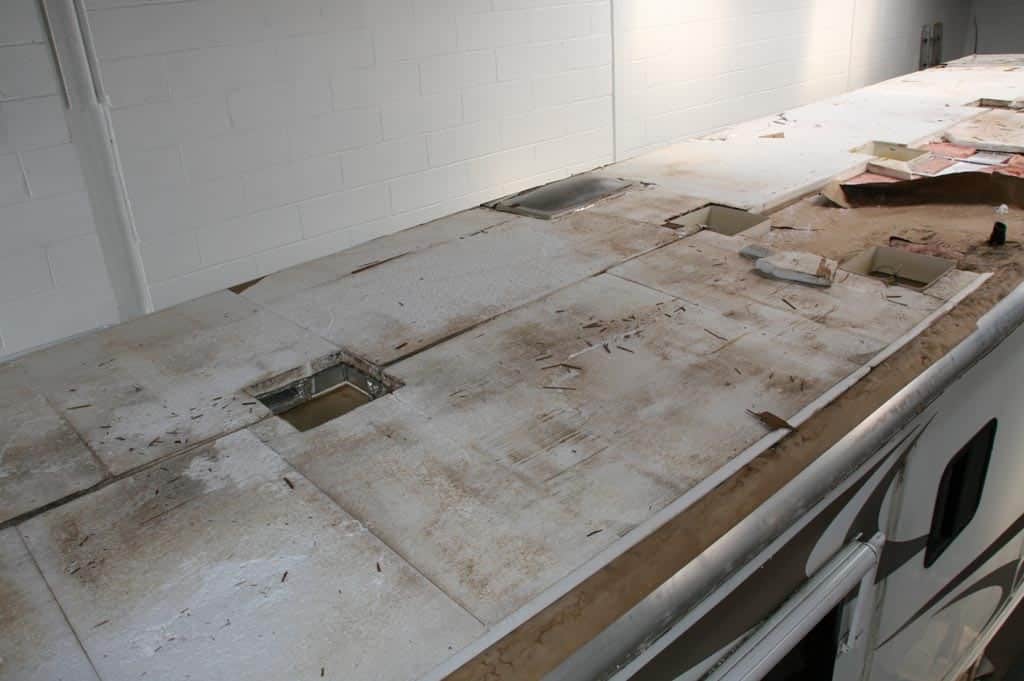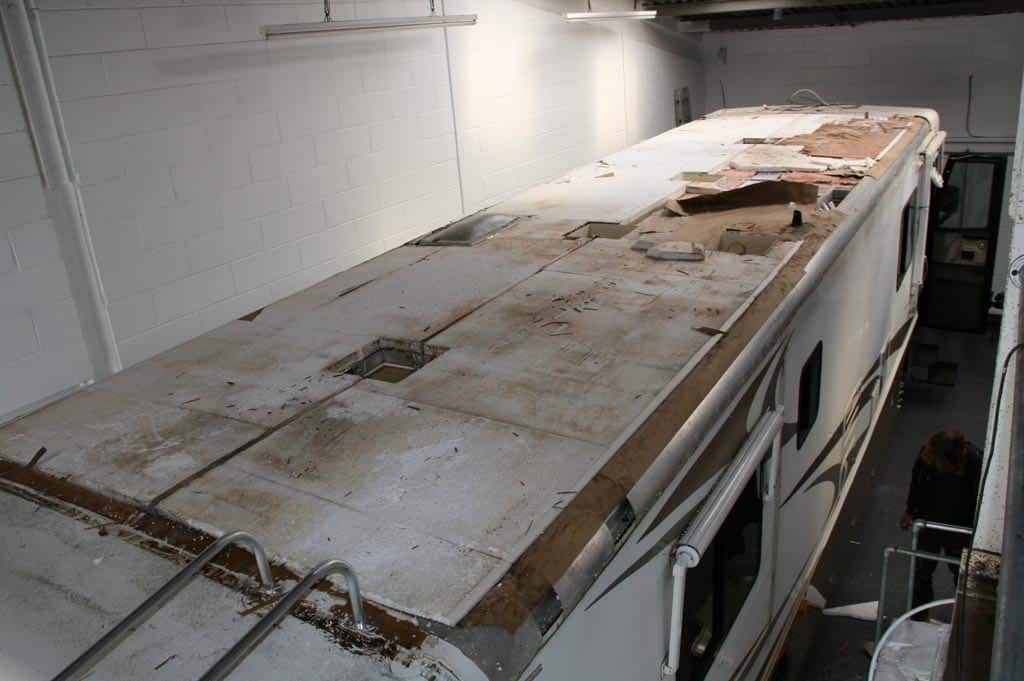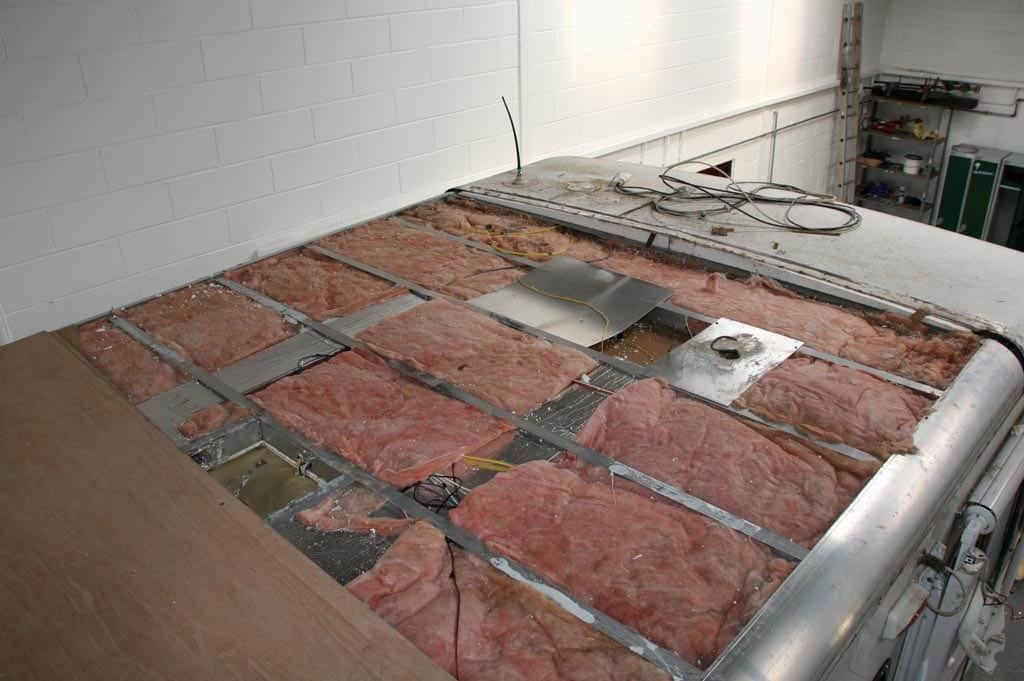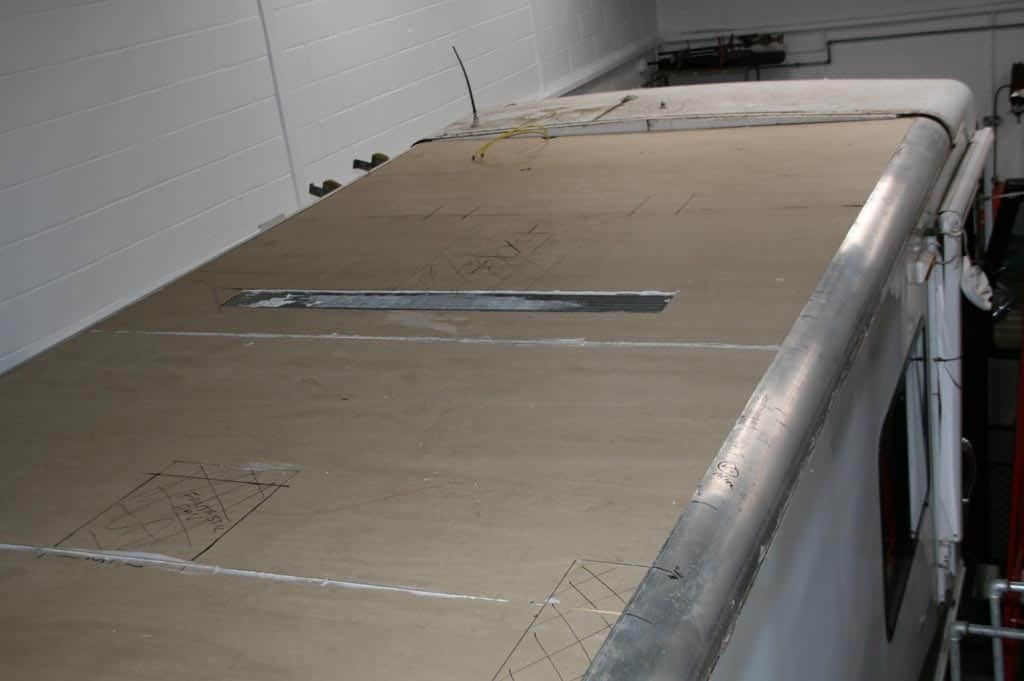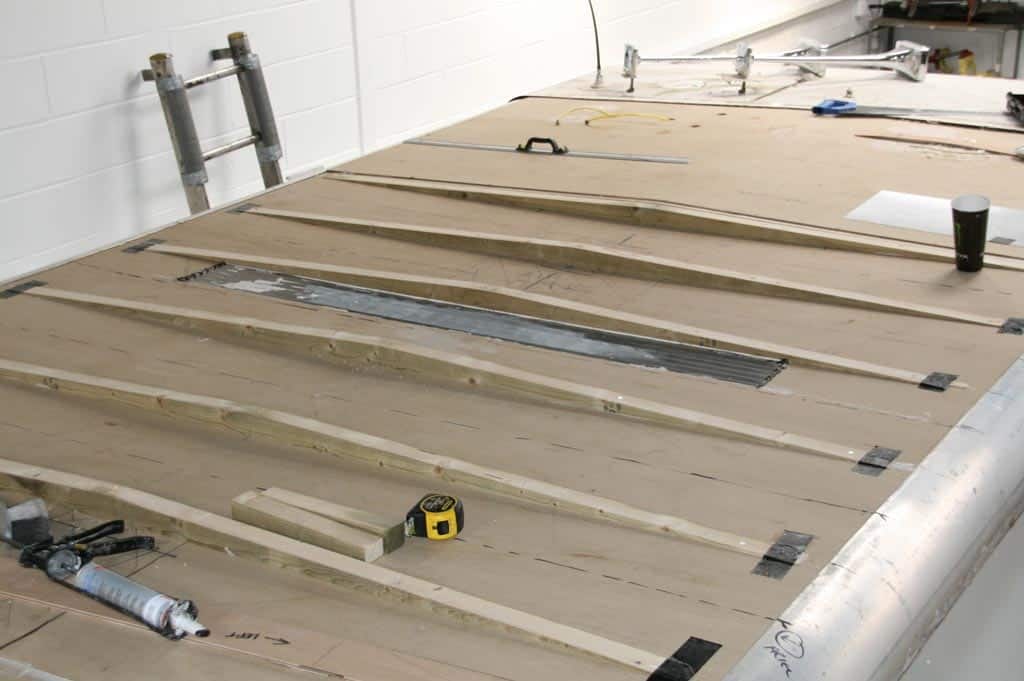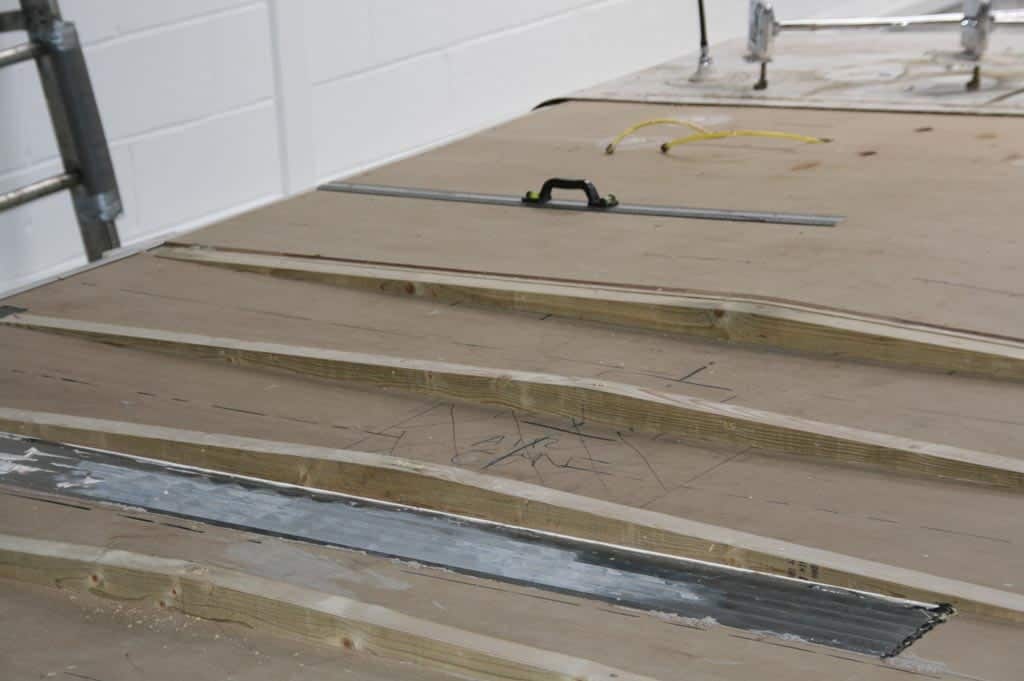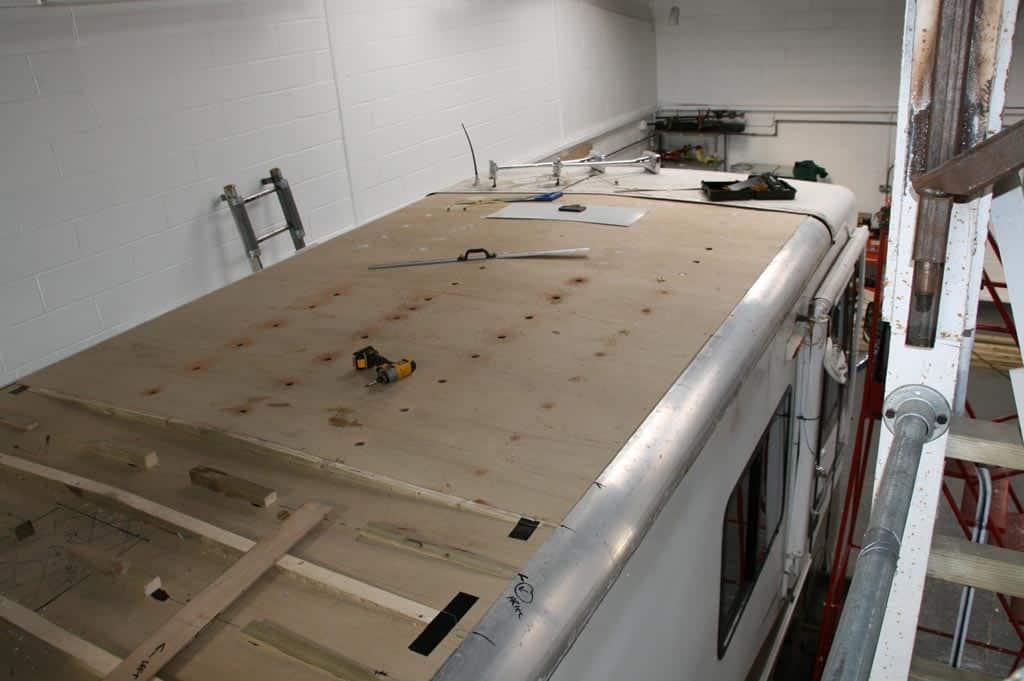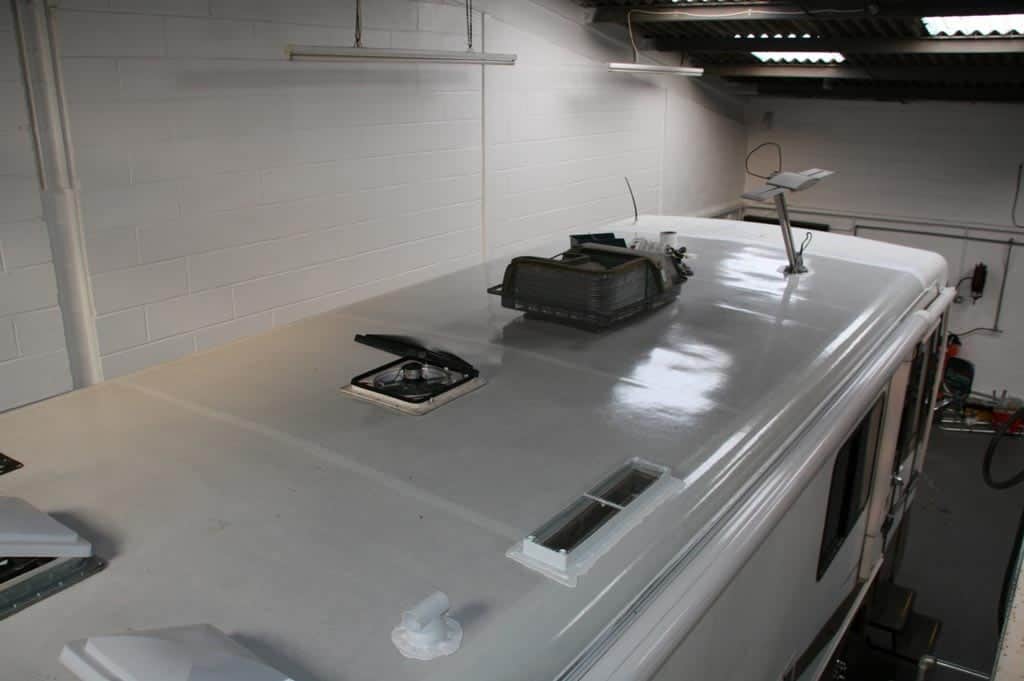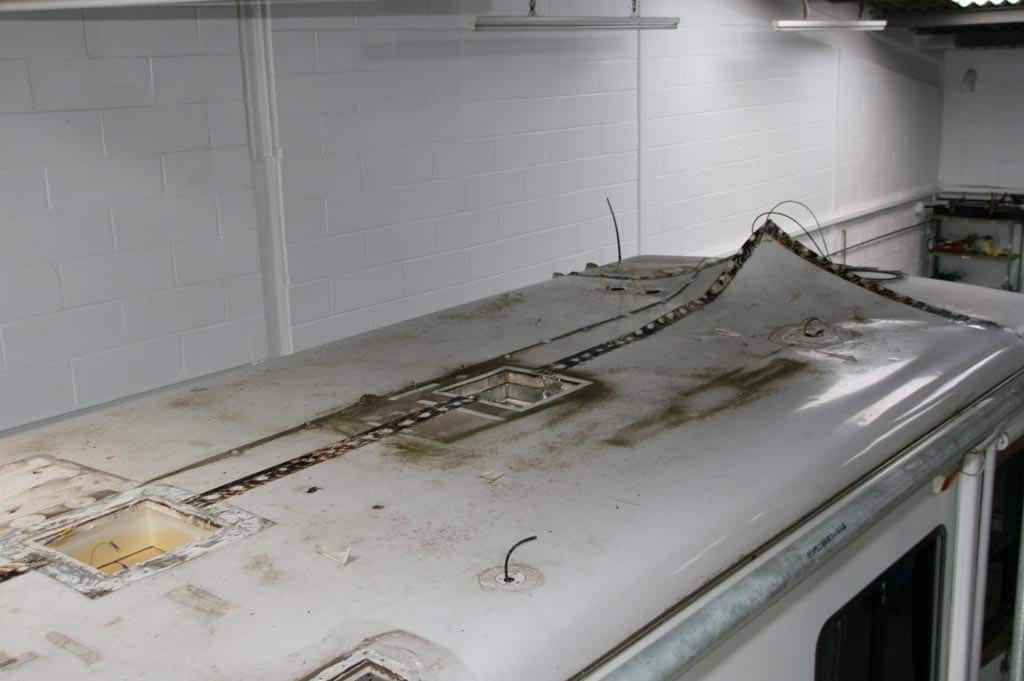Corrosion on Roadmaster Chassis
Corrosion problems on the Monaco Roadmaster chassis and how we fix them.
Converting American RV Motorhome, in the early 2000s, American RV manufacturers made a significant shift in their roofing approach. Between 2001 and 2004, many moved away from rubber roof membranes, opting instead for aluminium coverings. This change was primarily driven by the desire to address persistent leakage issues that had been plaguing the industry. At first glance, this seemed like a promising solution to an escalating problem.
Aluminium, as a roofing material, offered several apparent advantages. Most importantly, it could be painted white, reflecting heat and potentially improving the RV’s energy efficiency. This reflective property also had an aesthetic benefit: it eliminated the unsightly white streaks that often appeared on RV paintwork when rubber roofs weren’t regularly maintained.
Furthermore, aluminium’s malleability allowed manufacturers to create profiled roofs. This design feature enabled rainwater to be channeled effectively down gutters on either side of the motorhome, potentially reducing the risk of water pooling and subsequent leaks.
However, despite these perceived benefits, manufacturers overlooked a crucial factor: thermal bridging. This phenomenon occurs when there’s a significant temperature difference between the interior and exterior of a structure, causing condensation to form on the cooler surface.
To better understand this concept, consider your car windows on a cold day. Initially, they’re clear, but as you warm up the interior, moisture begins to appear on the glass. This same principle applies to aluminium RV roofs, but with more severe consequences.
Converting American RV Motorhome, in the context of RV roofs, thermal bridging became a substantial and costly issue. As the cold exterior environment cooled the outer surface of the aluminium, the lack of adequate insulation led to moisture formation on the interior side of the roof. This moisture then seeped into the wooden understructure, gradually causing rot in the roof members.
The effects of this thermal bridging were so pronounced that many RV owners mistakenly believed they were dealing with rainwater leaks. In some cases, the damage was extensive enough to convince owners that their roofs were actively leaking during rainy weather.
One potential solution to this issue would have been to fully insulate the underside of the roof and bond the aluminium outer sheets to the wooden structure. Unfortunately, in many cases, this crucial step was overlooked during the manufacturing process.
As time passed, these problems became increasingly apparent. With high-quality rear-engine RV pushers becoming harder to find, repairing existing models became a viable option for many owners.
At LAS Motorhome, we recently tackled this problem for a customer. After careful consideration, we determined that the best course of action was to rebuild the roof entirely and recover it with fibreglass. This process involves several key steps:
To better understand the conversion process, let’s examine it step by step:
Converting to a fibreglass roof offers several significant advantages:
The transition from aluminium to fibreglass roofs represents a significant improvement in RV construction. While aluminium seemed like a good solution initially, the unforeseen consequences of thermal bridging have led to the need for better alternatives. Fibreglass, when properly installed with adequate insulation, offers a superior solution that addresses these issues effectively.
For RV owners dealing with aluminium roof problems, converting to fibreglass can be a worthwhile investment. It not only solves existing issues but also prevents future problems, potentially saving money on repairs in the long run. Moreover, it enhances the overall comfort and energy efficiency of your RV.
If you’re considering converting American RV Motorhome roof conversion, it’s crucial to work with experienced professionals who understand the intricacies of this process. At LAS Motorhome, we have the expertise to handle these complex conversions, ensuring your RV roof is built to last.

